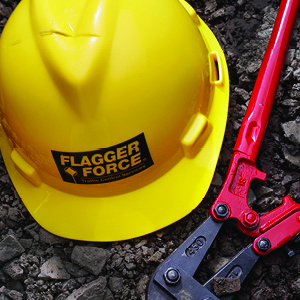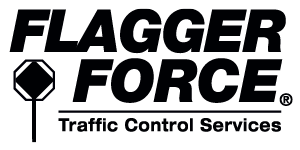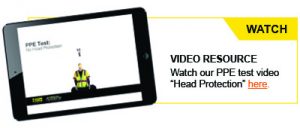Everyone on an active job site is exposed to the risk of injury, and the firsthand account below is just one example of the many potential work zone hazards field crews face. Therefore, OSHA requires that a hard hat meeting the ANSI Z89.1 standard always be worn while on a job site. This standard breaks down hard hats into two types as well as three classes based on protection from electrical hazards.
Types: 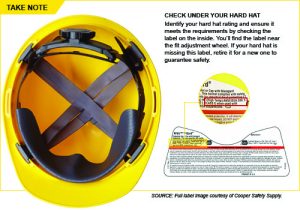
- Type 1 protects the top of the head. This hard hat is more commonly used in the United States.
- Type 2 protects the top as well as the sides of the head. This type is more common in Europe.
Classes:
- Class G (General) is rated for 2,200 volts.
- Class E (Electrical) is rated for 20,000 volts.
- Class C (Conductive) do not offer protection from electrical hazards
Flagger Force requires that all employees on a job site wear an ANSI/ISEA Z89.1 hard hat. This option falls into the Type 1, Class E category.
HARD HAT MAINTENANCE 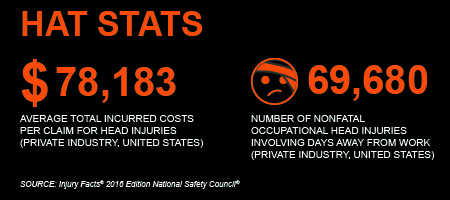
Since PPE is important to one’s personal safety, it’s essential to maintain the appearance of it and to regularly check it for potential inconsistencies that may reduce its function and its purpose of protection. When it comes to hard hats, there are a few things to keep in mind to properly maintain them and keep them up to OSHA standards:
- Before and after each use, always inspect your hard hat—checking it for any cracks, dents, or dimples. If you notice any, replace immediately, as these impact the durability.
- Avoid storing your hard hat in extreme climates. Exposure to UV rays and low temperatures can compromise the integrity of your hard hat over time.
- Stickers can be a safety risk and are advised against due to potentially obscuring wear and damage. They can also be an arcing hazard when working with electricity, as there is often metal embedded in stickers.
In general, hard hats should be replaced every two years. If a crew member is involved in an accident where the hard hat is impacted, the hat should be retired and replaced immediately.
FIRSTHAND ACCOUNT FROM THE FIELD 
Richard Florio, a Flagger Force traffic control Instructor and Advanced Crew Leader, was overseeing a road shoulder closure in Allentown, Pennsylvania. After completing a pre-job brief with his client, a utility contractor, to discuss the details of the day’s job, he and his traffic control crew set up the shoulder closure so their client could begin pulling new wires across a series of utility poles. Soon after the work zone was in place, the client began their work. This was a very routine setup, and the pulling of wires is a typical job Florio had worked around many times. While the contractor began pulling wires, Florio was monitoring the work zone. Suddenly, the bungee straps connected to the wire encountered a snag. The strap was stretched to its breaking point and snapped—sending a metal hook at high velocity in Florio’s direction. There was no time to react. The metal hook made a direct hit, embedding itself into the top of Florio’s hard hat.
“I heard a smack and felt slight pressure on my helmet. I was completely taken by surprise. I quickly moved farther down the work zone and examined my hard hat. I noticed a large crack with a piece of the metal hook still embedded into it. I felt very lucky that was not my skull. The experience gave me a new level of respect for all our personal protection equipment (PPE). As an instructor, it’s a story and lesson I share during all my trainings. Wearing PPE can be uncomfortable at times, but the risks in a work zone are real—I am living proof that following all the safety standards is truly important.”
